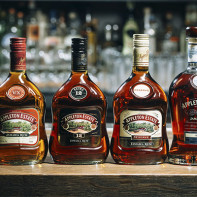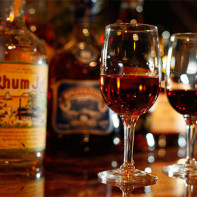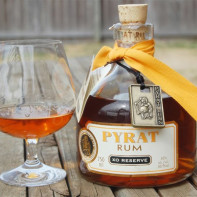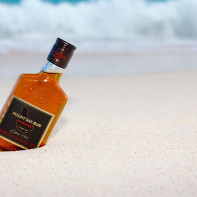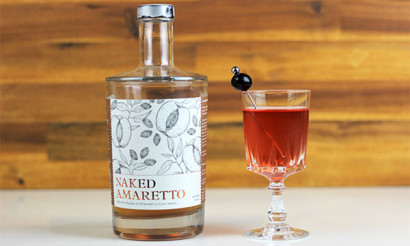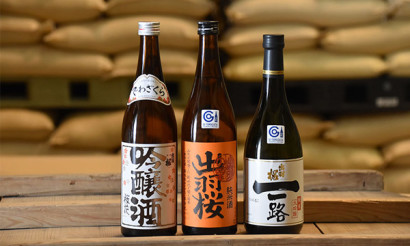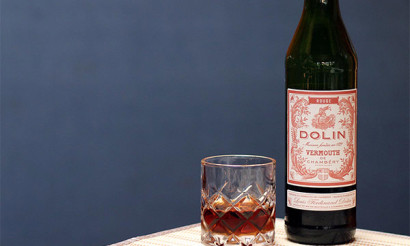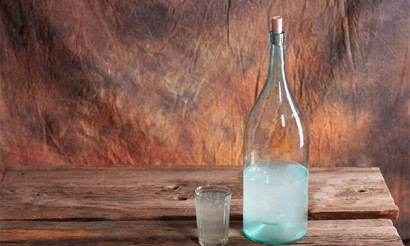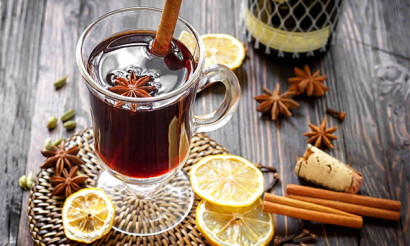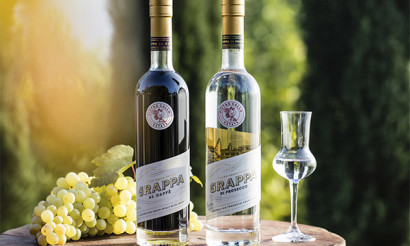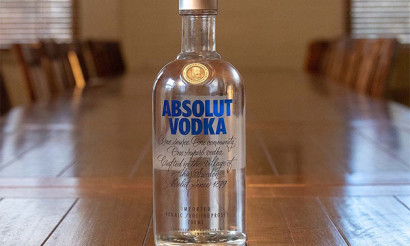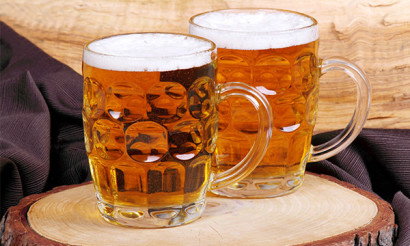How to drink rum properly.
A bottle, or even better a barrel of rum - an indispensable attribute of movies about pirates. At one time he was even a substitute for currency in certain circles. But when you think about it, it's quite an aristocratic drink. There are many brands, each of which has a unique taste and requires the right serving to the table.
- What is rum
- Features of production
- Types of
- Varieties
- Popular Brands
- Dominican
- Jamaica
- Cuba
- India
- Trinidad and Tobago
- Composition and Calories
- How to drink rum: the right glassware
- What to drink and how to snack on rum
- White
- Black
- Bacardi
- Captain Morgan
- Barceló
- Coconut Rum
- Can I drink it in its pure form?
- Rum Cocktails: Recipes
- With Cola
- Pina Colada
- Mojito
- Rum Benefits and Harm
- How to make rum in home conditions
- Interesting Facts
What is rum?
Strong alcoholic drink came to Europe from South America and Australia. The main producing countries are Cuba, Martinique, Jamaica, the Dominican Republic and Barbados. More modest volumes are produced in India, Tobago and Trinidad. When it comes to quality, the best varieties come from Latin America and the Caribbean. The geographical peculiarity is quite understandable. It is in these latitudes that sugar cane, which is the basis for molasses and syrup, is grown on an industrial scale. Without these ingredients, the drink loses all its charm and is not considered real. Its availability was ensured by its low price compared to cognac, and its strength allowed it to gather an impressive army of admirers. At first it was considered a sailor's drink and was taken on voyages to disinfect water, but it did not last long as an antiseptic. Quickly discerning its exhilarating effects, sailors began to decontaminate almost continuously.
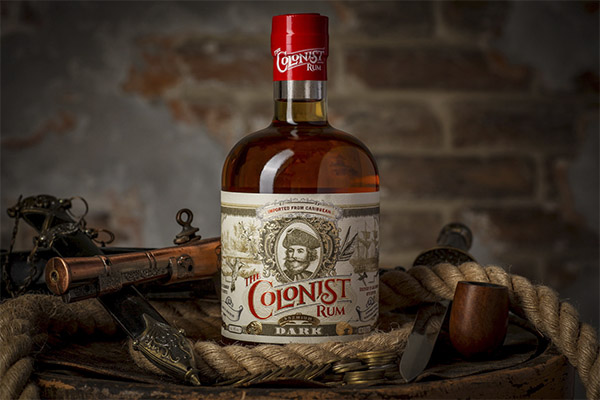
Interesting: The drink got its name in the seventeenth century. After 1670 when they tried to ban it rum became even more popular.
Until 1740 it was drunk undiluted, at best with the addition of a little lemon juice. Sailors quickly became addicted to it, losing their human form and fighting ability and instead suffering from cirrhosis of the liver and mental disorders. Edward Vernon, admiral of the British navy, was the first to sound the alarm, ordering that only a limited quantity of the diluted product be dispensed. Called grog, the drink was part of the mandatory ration for sailors until 1970.
The first attempts to make alcohol from cane juice and by-products of sugar production were made a long time ago. Historians point to the first centuries of our era. Already in his travel notes Marco Polo mentions his acquaintance with a drink resembling poorly purified rum. The modern drink has not changed a lot the recipe and is still made from fermented cane raw materials, but fermented, distilled and aged in oak barrels.
Originally rum had an oily flavor, was hard to drink, but it was affordable and sold almost everywhere. Until the turn of the XIX and XX centuries it was considered a drink for the poorest segments of the population, to drink it in high society was considered in bad taste. Changes began when the Spaniards announced a tender to improve the quality of the drink. Many responded, but the best result was achieved by Don Facundo Bacardi Masso. As a result of experiments, changes in aging time and distillation technology, a new type called pale rum was obtained. It had tangible advantages:
- more modern production technology, allowing it to be made in large quantities;
- high quality;
- a milder taste;
- absence of fusil oils.
The year 1862 is known to connoisseurs as the date of creation of the famous Bacardi brand.
Peculiarities of production
Rum is like a pirate in many ways. It has no homeland, no exact recipe and no time of aging. Only the cane raw material and the level of strength is mandatory. It is believed that the first rum was produced in Barbados, but there is no exact data.
To get a beautiful shade and flavor nuances the drink after purification is placed in oak barrels. And thrifty producers have adapted to use for this purpose the containers after bourbon aging, which are sold for next to nothing. The fact is that the technology prescribes to age the noble beverage only in new containers, which give a full range of flavors. Well, even barrels already impregnated with alcoholic vapors will be perfect for rum, the stronger and more fragrant it will be.
For the record: in the hot tropics it is impossible to keep a low temperature in the cellars where the rum ages. The average level is kept at around +30, which reduces the aging time of the drink by 2-3 times.
Types
Rum has no standards as such. More precisely, they are individual for each region and are characterized by the level of strength and aging time:
- Venezuela - 40% and 2 years of "rest" in barrels.
- Mexico - 40% and 8 months minimum.
- Dominican Republic - 6 major varieties from 40 to 75% and not less than 12 months of aging.
In Cuba, they do even simpler, taking the rest period after distillation as the basis of classification. After 3 years of aging, the rum is called golden, more than 7 years in barrels entitles the drink to be called dark, and the Blanc is on sale immediately after production.
Often rum is classified by the place of production, adding to it the national color. So in English-speaking regions, which include Jamaica, the recipe includes a lot of molasses, which gives the dark drink a specific taste and richness. Spanish-speaking countries are known for their light, mild rum. Regions of production include Cuba and Puerto Rico. The most traditional drink comes from the French-speaking islands, Guadeloupe and Martinique.
Varieties
Regardless of the brand, they are graded:
- light or silver;
- dark;
- flavored;
- robust;
- aged;
- rum elixir.
Each variety has its own flavor characteristics and rules of drinking.
Popular Brands
It is best to start acquaintance with a new drink with a quality version, so as not to be disappointed in it in the future, because the first impression is always the strongest. In most producing countries there are undoubted leaders, which are recalled first of all when talking about the drink of sailors and pirates.
Dominican Republic .
In its arsenal is the so-called "B" trio. These brands are well known and hold the leadership in the alcohol market of this segment.
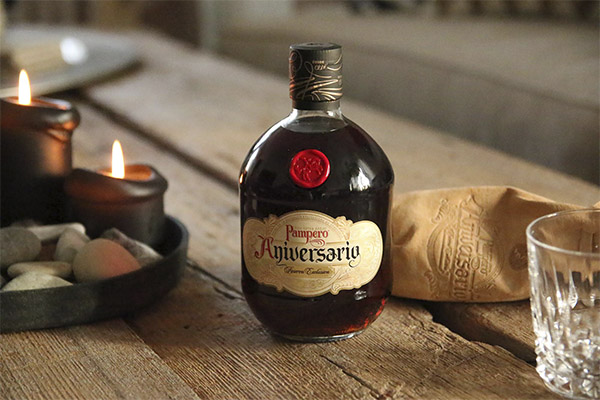
- Bermudez has 2 varieties and consequently extensions to the main name. Aniversario is aged for at least 12 years, acquiring an interesting golden-reddish hue. It is well recognized by the flavors of caramel, warm wood and roasted dried fruits. Don Armando features citrus notes, a hint of cane juice and caramel. The aging period is two years shorter. It won gold at the International Competition in Spain.
- Brugal gets its name from the founder of the rum factory. The beginning was so successful that it is now one of the top three exporters in the country. It is famous for developing the formulation of the dark Extra Viejo.
- The famous Barceló is relatively young, the production opened in 1929. The most famous varieties are Blanco, Añejo, Dorado. The Imperial and Premium Blend brands became repeated gold medalists in the premium series.
Jamaica
In this country rum has long become the national drink. Many recipes based on it have been invented there as well as unique recipes for the drink which is greatly enjoyed in its pure form. Jamaican rum is easily recognized by its unforgettable combination of flavors and their peculiar saturation. The technology of its production is fully preserved, which results in a viscous, aromatic drink with a tart note without extra sweetness. Drinks for export undergo double purification, obligatory distillation and long aging in oak barrels. They are expensive, but their quality is undeniable.
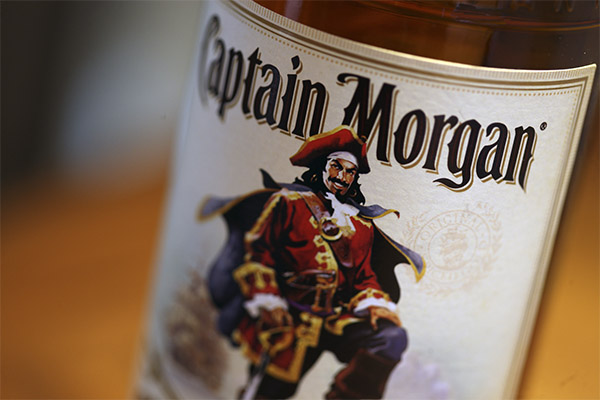
- Captain Morgan is one of the top three brands in the world. It is well known because of the spectacular image of a pirate leaning on a barrel with his favorite drink. The British company Diageo, the manufacturer of the brand, has developed a whole line of drinks under one brand, counting more than 20 items with strength from 35 to 55%.
- Appleton is great and deservedly recognized as one of the best. Its multi-dimensional flavor includes molasses, orange zest, woody aroma and a bright sense of spice. It is produced at the island's oldest facility. It is commonly consumed in its pure form. This variety is produced only from cane grown on the plantations of the farm of the same name, so it belongs to the terroir species. Remarkably, its production increases annually by 5-10%, and still the supply does not keep up with demand.
Cuba
This is where the most popular brand, Bacardi, is produced. All in all, six brands are produced in the country, including the most famous one. They do not compete with each other, but firmly hold a well-deserved title of the best rum in the world.
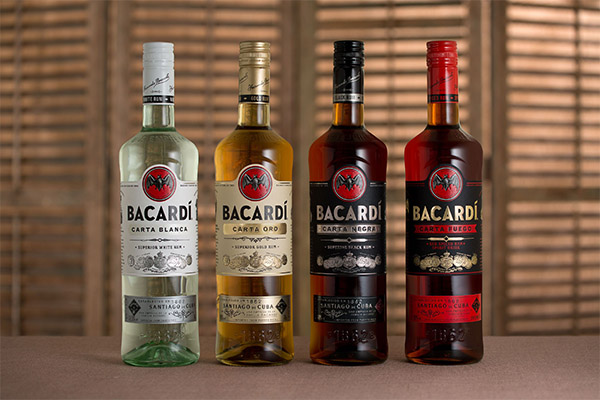
- Bacardi has been the leader for more than 60 years. It is famous for its unique technology of blond rum. The Bacardi brothers, the founders of the production, have several discoveries in the field of rum making. They managed to find a stable strain of yeast that could withstand the high temperature of fermenting cane raw material and developed a special technology of refining with the help of activated charcoal from wood and coconut bases. An important discovery was finding the optimum proportions when mixing rum and water, as well as a well-established system and the timing of aging in barrels. Many entertaining stories are connected with this drink. An original advertising move was the placement on the bottles of a stylized image of a bat, which is considered sacred and brings good luck. The illiterate population quickly assimilated the relationship between the picture and a quality inexpensive drink, demanding only rum and mouse in the taverns. Interestingly, the taste was so liked by the Queen of Spain, who visited the island in 1888, that a contract was made to supply the product to the court. A little later a small portion of light rum saves the life of the little heir by disinfecting his intestines and giving him the strength to cope with a fever.
- Havana Club ranks fifth in production and sales. Bacardi and Pernod Ricard have been competing for the right to make it for years. The stakes are high, but so far there is no undisputed leader. Twelve varieties are produced, among which Solera San Cristobal, Máximo Extra Añejo belong to the extra-premium class. Some varieties are only sold in Spain and are not exported. An example is Ritual Cubano. Most of the drinks are dark, with a golden hue, long-aged and strong. One light type is Añejo Blanco, which rests in barrels for at least 1.5-2 years after production, with a cherry, vanilla and cocoa taste, and is often used for cocktails. The other varieties connoisseurs prefer not to mix and savor pure.
- Legendario is called the Cuban Elixir because it falls short of the common standards by 1 degree, but it has a viscous consistency, rich, gradually unfolding taste. The first distillery where the popular drink was produced was turned into a museum of rum. Now six factories are open for it, working according to traditional technology without flavorings and aromas. Six kinds of rum are produced, the premium class includes Gran Reserva 15 Años with aging for at least 15 years.
- Santiago de Cuba is considered high quality and popular not only in Cuba, but also abroad. There are 6 varieties, from the light Carta Blanca to the dark and aged Santiago de Cuba 500. Four varieties are of the super-premium class.
- Matusalem is an example of how aptly chosen name after the biblical longevity helped the company to stay afloat in the most difficult years of economic crisis, while not losing the quality of production and popularity with the customers. The alcohol content is kept within 40%. Of the 6 varieties, the most expensive is Gran Reserva Solera 23, the taste is dominated by nutty and marmalade shades with a small amount of honey, sherry and almonds.
- Varadero is aged twice. First the spirits are in the barrels, and then, after the production, the drink itself. Some 60-80 years old barrels are used. Like a construction set, they are disassembled, fired and reassembled without using nails. The cracks are caulked with reed material, and the barrels are filled with water. After they've swollen and become airtight, the barrels go back to work, keeping one of Varadero's flavorful varieties under the lid.
India
The products of this country were for a long time produced only for domestic sales and did not enter the international market. The first attempts to export were made only at the very beginning of the XXI century. The dark Old Monk is admired by tourists and the light Elvis, once outside India, has become a serious competition to the old Caribbean varieties.
Trinidad and Tobago
The producers of Kraken brand found an original marketing ploy. They aged not the drink but the bottle itself giving it a Victorian ambience. They took into account most of the details, including the pouring of the neck, symmetrical handles for easy grip, the image of a mysterious deep-sea monster. Few consumers, picking up this masterpiece, would guess that the production is less than 10 years old. The first batch was released in 2010 with an impressive strength of 40 to 47%. As there was practically no time for aging, they took a different route, keeping it in barrels for only 1-2 years and adding natural herbs to the base. The makers claim to have added 11 herbs, including cinnamon and ginger. The color was given by the addition of caramel, the taste turned out to be perfect for cocktail mixes.
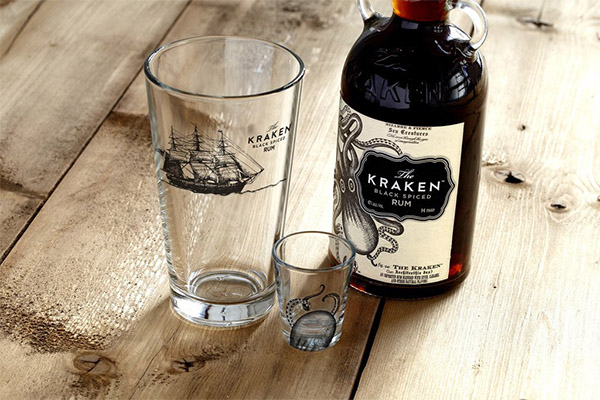
The Angostura line was created on the principle of breadth of choice. It has types for all tastes and occasions. There are gift, young, sweet, aged, strong and experimental. More often than not, customers' choices fall on the clear cocktail Reserva or Royal Oak Select, also used in complex blends. The premium class includes Angostura 1787, 1919, 1824, sold abroad. White Oak Rum, aged in bourbon barrels and with a dry rich taste, was and still is a favorite drink of Trinidadians.
Composition and calories
Rum does not do much damage to the figure, as it has a value of 220 kcal per 100 ml. It is produced from by-products left over from the production of cane sugar. The elite varieties are made from cane grown only in certain areas. The recipe includes molasses, caramel and herb additives. It is used as an aperitif, digestif, in cocktails, and in cooking.
What to drink rum out of: the right glassware
The very first samples of this alcohol were intended for sailors and the poor part of the population who never had glasses or crystal. They drank from mugs and flasks, taking it with them on long marches or leaving it for evening libations at home. Gradually ascending the social ladder, rum began to acquire aristocratic intentions and demanded a special attitude. The connoisseurs have derived the rule that the aroma and flavor are best felt if the glasses are matched to the variety. No special shapes or thicknesses of glass are required for rum; stoppers and goblets from existing stocks will do just fine. In its pure form, the dark varieties are drunk from whiskey stoppers. The shape of a tulip maximizes the bouquet of matured robust varieties.
Glasses with a thickened bottom can be any size. They are used for serving with ice. The degree of transparency and color do not have much importance. Much in the choice depends on the format of the holiday. For friendly get-togethers, shot glasses with slightly divergent edges are ideal. The dosage is small, easy to drink, aesthetically beautiful. For top-quality drinks cognac flutes are more appropriate. For digestifs suit sherry or liqueur shot glasses. All these containers are designed to serve pure, undiluted rum.
For hot cocktails and punches will be appropriate Irish glass on the stem of medium length, with one or two handles on the sides of the glass.
What to drink and how to snack on rum
Connoisseurs drink it undiluted and without snacks. It is believed that it is quite self-sufficient and does not need any additives. Those who do not have that much experience or prefer to keep their sanity longer, it is worth getting acquainted in advance with the rules of compatibility of products.

It should be taken into account: The type of appetizer must match the type of rum and not overpower the flavor bouquet.
White
It is rarely drunk in its pure form, in most cases it is used as a cocktail base. As an aperitif it is served in small glasses, warmed in the palms of the hands before the first sip. Appetizers should be light, so as not to spoil the appetite. A selection of sliced citrus fruits, with an emphasis on lime and lemon, as well as roasted and chilled turkey meat will do. Cheese slices, greens, and small sausage or ham sandwiches can be served.
Black
It allows only coffee, dark chocolate and an expensive cigar as an accompaniment. It can be served with citrus slices. The dark color is obtained after a long aging in fired barrels. No additional dyes are used. The rich palette opens gradually, do not spoil it with cola or other drinks, and do not overpower it with snacks.
Bacardi
There are several brands in the brand's arsenal, from light white to super elite. But the common feature in every drink is naturalness and depth of taste. Manufacturers do not use enhancers and stabilizers as a matter of principle. All kinds are better tasted from small glasses or shot glasses with thin walls. This way it warms faster with the heat of the hands and gets optimal temperature. For those who are used to drinking strong drinks, it is worth preparing water or freshly squeezed juice. As an appetizer, meat or fruit and citrus slices, liquid chocolate, and diced pineapple are good.
Captain Morgan
In many countries is the benchmark for this group of drinks. If the strength does not allow you to enjoy it in its pure form, the juice of lemon or coconut are acceptable additions. They both quite gently preserve the basic structure without spoiling it with impurities. You can serve pieces of bitter chocolate, pineapple, orange.
Important: Rum should not be left in an open bottle, it loses strength and most of the flavor. The ideal storage option is considered a silver flask.
Barceló
The norm when consuming this brand is considered serving ice or clean, very cold water. Glasses are better to choose without a stem, the drink should be slightly chilled before serving. For an appetizer, seafood, hard cheeses, pastries and fruit are prepared, where citrus fruits are preferred.
Coconut rum
It is produced in Barbados and is much more commonly referred to as a liqueur because of its level of sweetness and strength, which does not exceed 21%. It consists of white rum, water, sugar and coconut juice. It is served in its pure form and as part of cocktails. It may be accompanied by desserts, fruit or ice cream. The classic way of serving it is before coffee.
Can it be drunk in its pure form?
This is how it is consumed by connoisseurs, savoring the bouquet and enjoying the aftertaste. For this purpose, you can choose any kind of rum. Most often the choice falls on dark or golden varieties of premium and extra with a long ageing period.
Rum Cocktails: Recipes
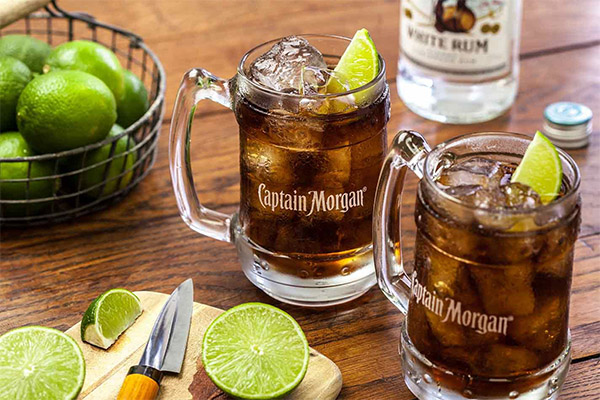
With Coke
The easiest to prepare and the most common. You'll need 50 ml. of rum, 3 times the amount of cola, and 1 four lime fruits. Pour ice in a tall glass up to half, then squeeze the juice from the lime and add rum. Finish the picture with a soda. There is no need to stir, everything will happen naturally if you follow the order of alternation of the liquids.
Pina Colada
Its composition is quite complex, but the recipe is a hallmark of many high places. It consists of light and dark rum, 60 and 15 ml respectively, 50 ml of coconut syrup and twice as much pineapple juice. Add crushed ice and the juice of a quarter of a lime to the mixture and mix in a shaker. Serve in a tall glass, with a pineapple ring as an obligatory garnish. Possible variations with Malibu liqueur, fresh strawberry.
Mojito
Famous for its wonderful refreshing properties. The basis is rum, soda and fresh mint leaves. There is a little secret to a successful preparation. First lay out the mint ingredient, then the lime, pour 15 ml of sugar syrup over the layers and lightly squeeze in the glass so that the minty flavor mixes with the lemon flavor. Then pour the ice, pour the soda and light rum.
The number of rum-based cocktails cannot be counted. Along with the classic recipes, new ones regularly appear, surprising in taste and appearance.
The benefits and harms of rum
The useful qualities are evidenced by the fact that the drink was a mandatory part of the diet for the privates and officers of the British Navy. Strong alcohol kills E. coli, disinfects water, is able to alleviate feelings in fevers. It is used to soothe and relax after a busy day, as part of the grog, it can prevent colds in case of hypothermia.
Harm from the product is obtained when consumed in large quantities. The liver and kidneys do not withstand the massive blow, failing to cope with their tasks. There are many lovers of low-quality rum and chronic alcoholics. Everything must be in moderation, and then the tasting will bring only positive emotions.
How to make rum at home
Those who want to experiment will be encouraged by the fact that at one time the drink was also produced in the USSR. They did without cane, replacing it with other ingredients.
It is worth noting that without distillation and aging in barrels you get an ordinary tincture, but with a similar color and remotely resembling the traditional taste.
Quick preparation will take two weeks. In the composition:
- 2 liters of moonshine or alcohol;
- 40 g of sugar or honey, you do not need to look for cane sugar;
- 0.5 g vanilla;
- 3-4 g of ground coffee;
- 5 g of oak bark.
If desired, the alcohol can be replaced by vodka, but the degree of the finished product will fall. The preparation is very simple. Sugar should be burned into caramel, if the body does not accept it, then replace the ingredient with honey. Then put all the components in a bottle or jar, pour alcohol and close tightly. Insist in a dark, warm place, stirring every day by shaking the container, except for the last 48 hours. Then pour the finished product into a clean container through a thin hose without disturbing the sediment. For greater verisimilitude, the resulting drink should be aged in a jar with oak strips or sticks for up to 1 year.
Interesting Facts

- In America, Australia and the Caribbean islands, rum was used instead of gold.
- The price was so low that even the poorest islanders could buy it.
- There is no exact recipe, and the division into varieties is based on the place of production.
- Until the second half of the 20th century, this alcoholic beverage was part of the obligatory ration for sailors.
- Improvements in technology led to the emergence of elite types, and rum became a drink of high society.
Rum has had a remarkable journey from a fermented product to a national treasure. Its history is worthy of an adventure novel, and the varieties are so varied that they can satisfy the most discerning palate.
«Important: All information on this site is provided for informational purposes only. for informational purposes only. Please consult with your health care professional before using any of the recommendations. specialist before using any of the recommendations. Neither the editors nor the authors shall be liable for any possible harm caused by materials."

